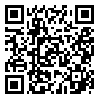BibTeX | RIS | EndNote | Medlars | ProCite | Reference Manager | RefWorks
Send citation to:
URL: http://jdisabilstud.org/article-1-2618-en.html
2- Assistant Professor of Psychology. Department of Humanistic Science, Kerman Branch, Islamic Azad University, Kerman, Iran
Abstract
Background & Objectives: Developmental coordination Disorder is one of the neuro-motor disabilities that causes problems in children's daily life activities or academic achievement. Children with developmental coordination disorder have more problems when assessed regarding academic achievement and psychosocial adjustment. In recognition of the importance of the sensory-motor system of the brain, Aires (1974) proposed a model of sensory-motor integration in children with learning disabilities. According to Aires' theory, integrated processing arises from perception, and the ability to combine sensory information helps interact effectively with the environment. Between the ages of 5 and 10, visual perception grows a lot. Disruption of visual skills will often cause trouble in children's academic performance. So, the current study aimed to evaluate the effectiveness of enhancing sensory-motor functions in strengthening the visual-motor control skills of children with developmental coordination disorders.
Methods: The current study has a pretest-posttest design with a control group. The study's statistical population included all children aged 5-6 years with developmental coordination disorder living in Yazd Township, Iran, in 2019. Of whom, 30 children with developmental coordination disorder were selected using a Developmental Coordination Disorder Questionnaire (Wilson et al., 2009) via random cluster sampling. They were randomly divided into two groups of 15 (experimental and control groups). In the pretest and posttest, their visual-motor control was assessed using the visual-motor control subscale of the Bruininks-Oseretsky Test of Motor Proficiency (Bruininks, 1978). Interventions related to enhancing sensory-motor functions were carried out in the experimental group. The intervention sessions were designed as 24 sessions, in which 2 sessions of 60 minutes were presented each week alternately. The sessions were performed by the study's first author and two assistant psychologists (MSc holders). The intervention design was done according to the weaknesses of children with developmental coordination disorders. In this way, the research background on the problems of children with developmental coordination disorders was examined. The needs assessment was done through interviews with 20 mothers of children with developmental coordination disorders. Then based on the book of activities related to sensory integration, games related to the treatment program were designed and approved by 3 experts in the field of childhood disorders. Descriptive and inferential statistical methods were used to analyze the data according to the type of research variables. At the level of descriptive statistics, minimum, maximum, average, and standard deviation indicators were calculated. The research data was analyzed using univariate covariance analysis. All data were analyzed at a significance level of 0.05. The collected data were analyzed in SPSS version 16 software.
Results: The analysis of covariance showed that after adjusting the pretest scores, there was a significant difference between the posttest of the experimental and control groups in the scores of motor vision control in children with developmental coordination disorder (p<0.001). The effect size of sensory-motor enhancement on visual-motor control was 0.651. In other words, the effect of sensory-motor training on the degree of motor vision control in children with developmental coordination disorder was 65.1%.
Conclusion: According to the results, sensory-motor training positively and significantly increased visual-motor control and strengthened sensory-motor functions. It improves the visual-motor control skills of children with developmental coordination disorders.
| Rights and permissions | |
 |
This work is licensed under a Creative Commons Attribution-NonCommercial 4.0 International License. |



